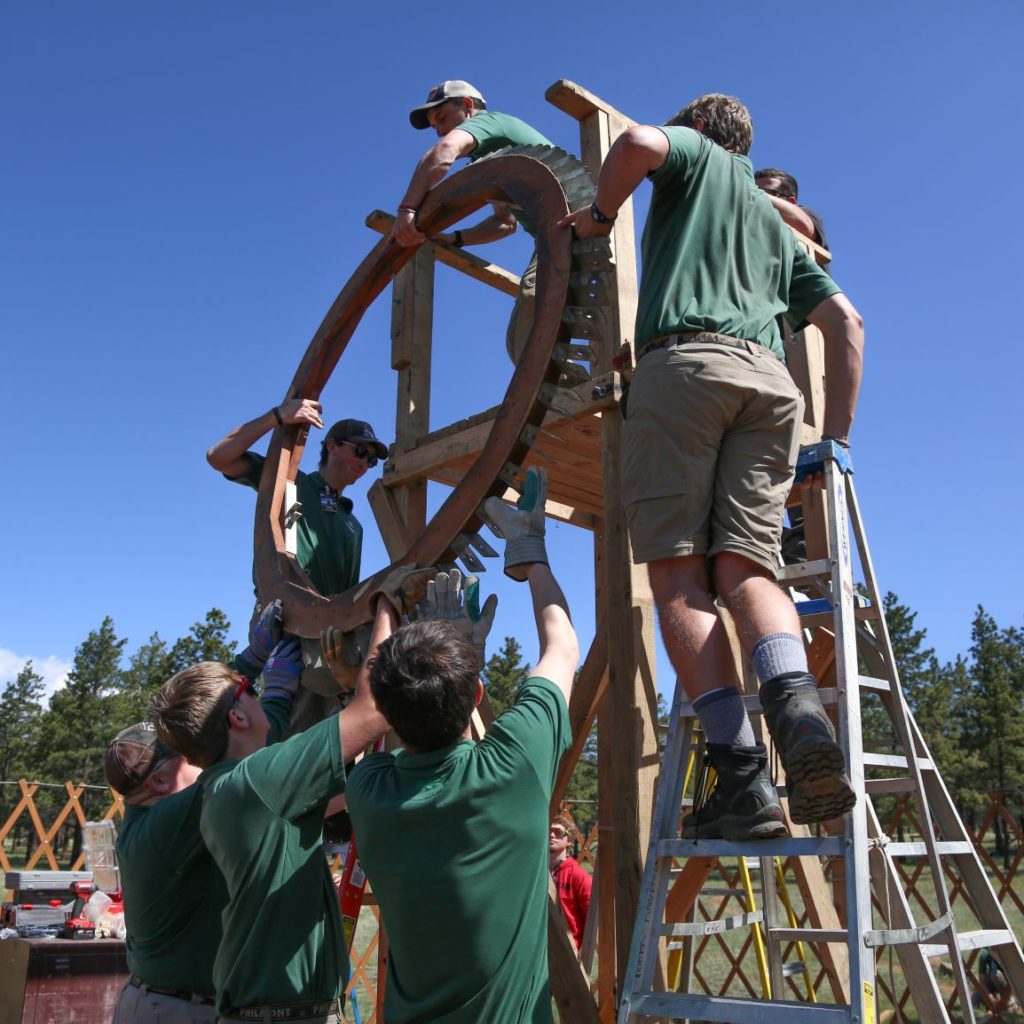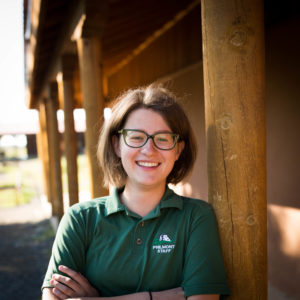
As a caravan of Philburbans and commissary trucks crawled up the road toward Seally Canyon, the excitement was palpable.
“We’re home!” yelled one staff member, jumping out of the vehicle and running over to hug another staffer when the vehicles came to their final stop.
The group assembled in the Valle Vidal on June 2 was a mix of full-time staff, seasonal staff and a few volunteers, all gathered for the annual Yurt Day. Their job was straightforward but not easy: set up yurts at Whiteman Vega and Seally Canyon for the coming summer.
The yurts serve as the main structure in each camp. While other Philmont camps have cabins, the Valle Vidal area is different. Philmont’s land use agreement with the Forest Service requires that structures erected in the Valle be temporary.
Land use agreements also require Scouts to follow special rules while hiking and camping.
“In areas such as the Valle Vidal, Chase Ranch and UU Bar, we require low-impact camping by crews,” Backcountry manager Olivia Starich said. “In turn, our infrastructure needs to be relatively low impact as well.”
Photographed by Monica Dunn.
When it’s set up, a yurt may look as if it’s all one piece, but that’s far from the truth. The yurt platform stays at its location year-round and all the other pieces arrive separately. The doors, the lattices, the oculus, the ring of death, the canvas roof, the canvas walls and dozens of two-by-fours are all needed to make a single yurt.
With so many pieces, it’s no surprise that building a yurt is essentially an exercise in teamwork. Several people are needed to hold pieces together and make sure bolts are tight.
“The yurt manuals provided by the manufacturer suggest that a yurt might take 3-4 days to put up,” Starich said. “Because we collaborate with different departments and different camps, we’re usually able to get one yurt up in about three or four hours.”
The first order of business in yurt building is to set up the doors and bolt lattices to them, creating the framework for the walls. The lattices support two-by-fours at the bottom of the roof, while the ring of death at the top holds everything together.
After a long process of bolting each two-by-four to the ring of death and attaching it to the wire strung along the top of the lattice, the canvas roof and walls can be pulled over the structure and tied together. Lastly, the oculus, the window at the peak of the yurt, is attached.
It may be finished for now, but staff will still need to dismantle the yurt it at the end of the season. Luckily the hard work comes with a reward: a place to call home for the summer.
“It’s really exciting for these camps to go out to their ‘homes’ for the first time and have such a direct impact in getting their camp set up,” Starich said. “I think having the year off from the fire only heightened the excitement and the satisfaction that comes with the unique homecoming that is Yurt Day.”

Liz Harper
Liz Harper is a third-year Philmont staffer out of Pittsburgh, Pennsylvania. She’s a recent graduate from Ohio University, earning a degree in journalism. Liz came on trek in 2016 and has worked at Philmont every summer since.